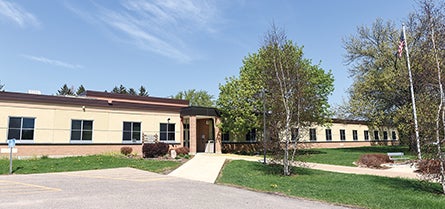Questions of space; School Board hears space recommendations, referendum may be placed on November ballot
Published 8:57 am Wednesday, May 16, 2018

- Woodson Kindergarten students in Ellie Verdoorn’s class get an up-close look at some baby chickens Tuesday. Woodson is at the heart of recommendations to the Austin School Board, addressing space needs in the district. Eric Johnson/photodesk@austindailyherald.com
An expansion of Woodson Elementary School to house preschool through first grade — which would include building a two-story addition to the site — is one of four recommendations to address growing space needs in Austin Public Schools.
The recommendations affect six of the district’s schools and will most likely result in a bond referendum – estimated at $30 million or less – on the November general election ballot, said Mark Stotts, director of finance for the district.
Craig Byram, a member of the 60-member facilities task force, presented the results of its work to the Austin School Board on Monday.
The list of four recommendations “addresses a number of different (space) problems,” Byram told the board, adding the recommendations came after over 20 different concepts were discussed and brainstormed in several meetings, held since January.
Triggering the formation of the group was concern for space provided in classrooms at Queen of Angels Catholic Church, where the Community Learning Center has been located.

The Austin School Board heard recommendations on ways to address space needs at public schools in Austin, including adding a two-story addition to Woodson Kindergarten. Eric Johnson/photodesk@austindailyherald.com
Preschool classes have been held there, but structural limitations and lack of expansion space for a growing school population prompted officials to consider other options. Those options included a focus on elementary school space as well.
The concern comes from good news: Austin, unlike many school districts, has grown in school population by 1,000 students in less than 10 years. That has put pressure on the capacity of the buildings.
The planned expansion of Woodson not only provides the needed space for preschool, but the inclusion of first grade at the site relieves pressure on the other elementary schools. The district would no longer use the Queen of Angels site.
The second recommendation would be to have second, third and fourth grades at Banfield, Southgate and Neveln elementary schools.
The third recommendation would have Sumner Elementary School repurposed to house district offices, the Area Learning Center, and Adult Basic Education.
Byram said suspending classes at Sumner was good, given that the school is landlocked, lacks expansion potential and has little parking.
As a result, students who would ordinarily attend there would enjoy more green space and amenities at the other elementary schools.
The final recommendation would be the current district offices, housed on the north end of the high school, would be used for expansion of classroom space at the high school.

Woodson Kindergarten teaacher Ellie Verdoorn holds a baby chick so Caden Joseph lightly pets it Tuesday. Eric Johnson/photodesk@austindailyherald.com
Board member Kathy Green applauded the work done by the task force and the result.
“It’s a positive in so many ways,” she said, adding the move was proactive.
The district “is getting out ahead of the needs,” she added referring to the expansion that will be needed as the younger population comes up through the grades.
Dave Maroney of ATS & R, the architectural firm working with the group, said the Woodson site may require the acquisition of more land. The new complex would include 900 students, but each group — preschool, kindergarten and first grade — would have separate spaces, said Superintendent of Schools Dave Krenz. The addition would come on the south side of the property.
Board Chairwoman Angie Goetz said she had heard positive response from parents, who liked the idea of the smooth transition from preschool, to kindergarten, to first grade.
Maroney said while no firm number has been reached, the work at all four schools would “be less than $30 million.”
Stotts said all discussion of how any of the schools might look at this point “is conceptual … (and) we do not have firm numbers at this point.”
He added later that the district enjoys low debt and that even at $30 million, “we would still be a low-debt school district,” he said.
Architects will begin their work when they meet with teachers to hear what they think is important about new spaces in relation to curriculum and learning.





